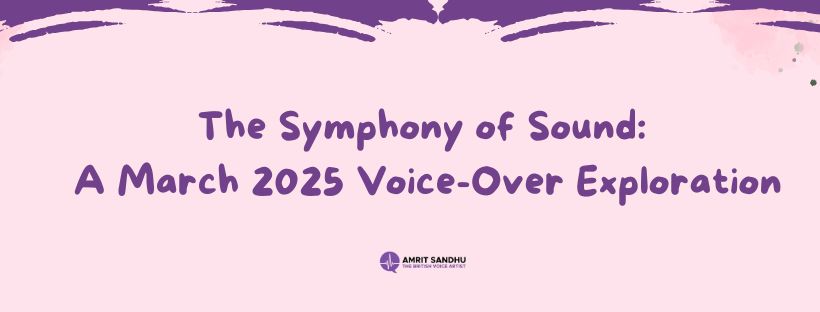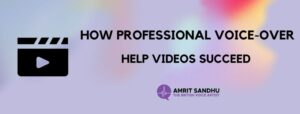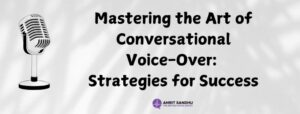The world of voice-over is a dynamic orchestra, with each voice adding its unique timbre and emotion to the grand symphony of sound. As we navigate the evolving landscape of audio in March 2025, it’s a perfect time to explore the diverse instruments and melodies that make up this captivating art form.
The Rise of the Audiobook:
The rise of the audiobook is a testament to our collective desire for captivating stories, delivered in a convenient and immersive format. Listeners crave the experience of being transported to another world, and voice-over artists are the key to unlocking that magic.
With audiobooks becoming a major force in the entertainment and education landscape, demand for talented voice actors has skyrocketed. Listeners expect more than just a simple reading; they seek engaging performances that breathe life into characters, evoke emotions, and enhance the storytelling experience.
Voice-over artists are the storytellers, the character interpreters, and the emotional guides. Their ability to bring nuances, inflection, and personality to the written word creates a truly immersive experience for the listener. This demand is not just for traditional novels, but also for genres like self-help, educational materials, and even children’s books, making the audiobook landscape increasingly diverse and exciting.
As the audiobook industry continues to grow, the role of the voice-over artist becomes ever more crucial. Their voices are the instruments that bring stories to life, creating a vibrant and engaging symphony of sound that captures the imagination of listeners worldwide.
The Podcast Powerhouse:
The podcast revolution has transformed the way we consume information and entertainment, and at the heart of this audio boom are the talented voices that bring these podcasts to life. Podcasts have become a dominant force, offering a diverse range of content from captivating storytelling and thought-provoking interviews to insightful educational series.
Voice-over artists are integral to this dynamic landscape, shaping the tone and personality of each podcast. Their voices guide listeners through complex narratives, engage them in insightful conversations, and deliver engaging educational content. Whether it’s the warm and inviting voice of a storyteller, the authoritative tone of an interviewer, or the clear and engaging delivery of an educator, voice-over artists are the essential element that brings these podcasts to life.
The rise of podcasts has created a diverse marketplace for voice-over talent, demanding a range of voices and styles. From conversational and informal to authoritative and professional, voice-over artists must be adaptable and able to connect with their audience on a personal level. The power of a well-chosen voice can elevate a podcast from good to great, captivating listeners and building a loyal following.
The E-learning Revolution:
The e-learning revolution has transformed the way we learn, and at the heart of this digital transformation is the power of voice-over. Online learning platforms rely heavily on voice artists to make complex topics accessible and engaging for a global audience.
Imagine trying to absorb complex scientific concepts or learn a new skill through a purely visual experience. It’s the voice that brings clarity, guides understanding, and adds a personal touch to the learning process. Voice artists with a clear, informative tone are highly sought after to deliver engaging lectures, explain intricate concepts, and create a dynamic learning experience.
The ability to simplify complex information, break it down into digestible chunks, and infuse it with a clear and engaging tone is essential for e-learning voice artists. They act as virtual guides, leading learners through challenging material and making it more accessible and enjoyable. As e-learning continues to expand its reach, the demand for skilled voice talent is only going to grow, making it a rewarding and dynamic career path for those who possess the right skills and passion.
The Rise of AI, the Human Touch Remains:
The rise of AI in voice-over production has created a fascinating dynamic. While AI tools can generate synthetic voices and even automate some aspects of production, they still struggle to replicate the nuanced human touch that makes voice-over so captivating.
AI may be able to create a voice that sounds natural and clear, but it cannot yet truly convey the emotional depth, personality, and authenticity that a human voice artist brings to a project. The subtle inflections, the pauses, the variations in tone that convey emotions like excitement, sadness, or humor – these are the qualities that AI still struggles to grasp.
While AI can be a valuable tool for certain applications, such as creating quick voice-overs for e-commerce or generating different language versions, it cannot replace the human connection that a voice artist can bring. Audiences crave that human element – the warmth, the empathy, the ability to connect with their emotions on a personal level. This is why voice artists remain in high demand, especially for projects that require a genuine, nuanced, and emotionally engaging delivery. The future of voice-over likely involves a blend of AI and human talent, each complementing the other to create a more powerful and expressive experience.
The Power of Diversity
The voice-over industry is undergoing a beautiful transformation, mirroring the rich tapestry of voices in our world. Gone are the days of a singular, homogenous sound – clients are now seeking voices that authentically represent their target audiences. This shift towards diversity is a welcome change, creating a more inclusive and engaging landscape for both voice artists and listeners.
Clients are recognizing that authenticity matters. They want voices that resonate with their target audiences, voices that reflect the unique perspectives and experiences of diverse communities. This demand extends beyond simply using different accents or languages. It’s about finding voices that truly embody the spirit and identity of their target market, fostering a deeper connection and building trust with listeners.
For voice artists, this shift represents a fantastic opportunity. It means that talents from all backgrounds, with diverse accents, languages, and cultural experiences, have a chance to shine and contribute their unique voices to the world. The industry is becoming more inclusive, welcoming diverse voices and celebrating the unique beauty of each individual’s sound.
The Future is Collaborative:
The future of voice-over is not about solitary voices, but about the vibrant symphony created when different voices come together. Collaboration is becoming the driving force in the industry, as artists recognize the power of synergy and the creative spark ignited when diverse talents merge.
This collaborative spirit is evident in various areas. Podcast co-hosts with distinct personalities and perspectives create engaging dialogues that keep listeners hooked. Multi-voice audiobook productions, featuring narrators with different voices and tones, bring characters to life with greater depth and realism. Even in the realm of e-learning, collaborative projects featuring multiple voices can break down complex topics and cater to diverse learning styles.
This collaborative trend is fueled by a desire for a more dynamic and engaging experience. Listeners are looking for content that goes beyond a single voice, seeking the richness and depth that comes from multiple perspectives and vocal styles. For voice artists, this shift opens up exciting new opportunities to collaborate with fellow artists, explore different genres, and expand their creative horizons. The future of voice-over is about harnessing the power of collaboration, creating a symphony of sound that is both captivating and enriching.
The Importance of Versatility:
In the dynamic world of voice-over, versatility is your greatest asset. The ability to seamlessly adapt to different styles, tones, and genres is crucial for success. Imagine a voice artist who can effortlessly switch from the warm, engaging tone of a children’s audiobook to the authoritative voice of a documentary narrator, or the quirky charm of a commercial to the soothing voice of a meditation app. This adaptability is what keeps voice artists competitive and in demand.
Expanding your vocal range, exploring new accents, and mastering various recording techniques is an ongoing journey. Embrace the challenge of honing your skills, experimenting with different styles, and pushing your creative boundaries. It’s this constant evolution that will allow you to adapt to the ever-changing needs of the industry. Remember:
- Your voice is unique: Embrace your individual voice and use it to create your own distinct brand. Your unique vocal qualities and personality are what make you stand out.
- The industry is constantly evolving: Stay informed about new trends and technologies. Explore new platforms, learn about emerging audio formats, and adapt to the changing landscape.
- Collaboration is key: Network with other artists, producers, and clients. Explore opportunities for joint projects and build a collaborative community.
- The human touch remains essential: While AI is a powerful tool, it cannot replicate the emotional depth and connection that a human voice can bring. Embrace your humanity and let your voice shine through.
The future of voice-over belongs to those who are versatile, adaptable, and embrace the power of collaboration. By embracing your unique voice and continuously refining your skills, you can create a successful and fulfilling career in this dynamic and exciting field.
The world of audio is a vibrant orchestra, constantly evolving and creating new melodies. Voice-over artists are the instrumentalists, shaping the sound and bringing stories to life. This is not a static field; it’s a dynamic landscape where innovation, creativity, and collaboration are key. Don’t be afraid to experiment, explore your unique talents, and push your boundaries. Embrace the exciting opportunities that lie ahead, and let your voice be heard in this ever-expanding world of audio



